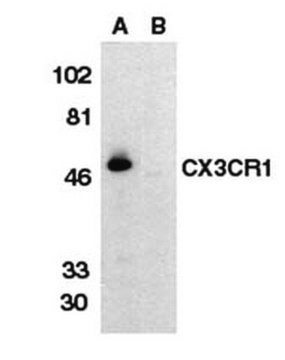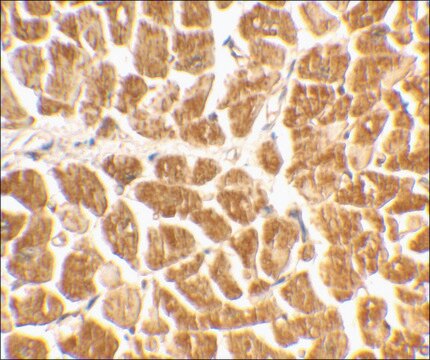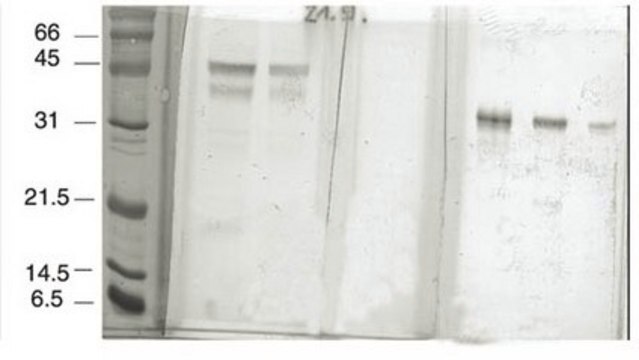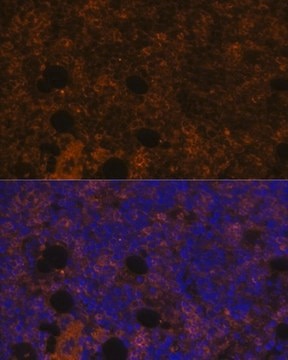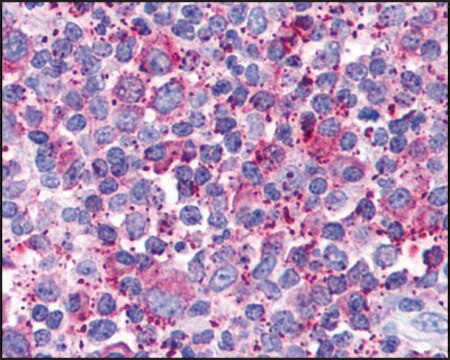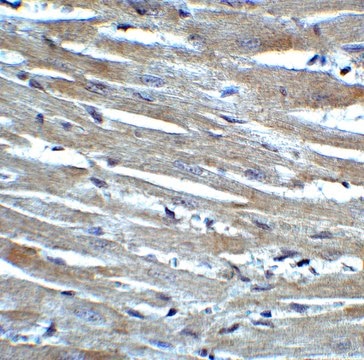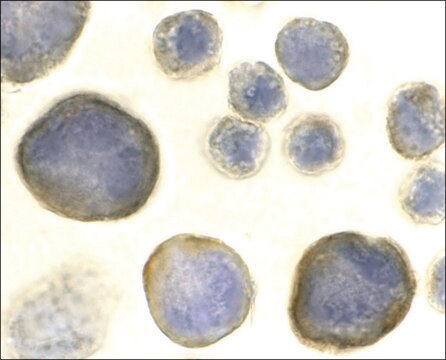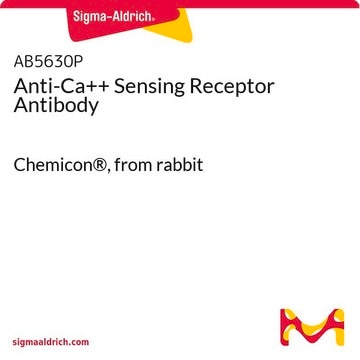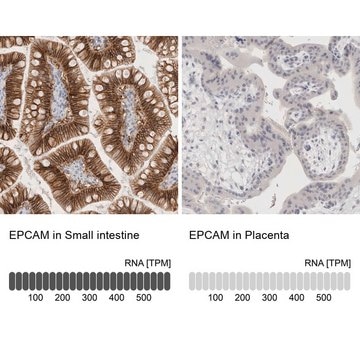AB1892
Anti-C-X-X-X-C Chemokine Receptor 1 Antibody, NT
Chemicon®, from rabbit
Synonym(s):
CX3CR1
Sign Into View Organizational & Contract Pricing
All Photos(1)
About This Item
UNSPSC Code:
12352203
eCl@ss:
32160702
NACRES:
NA.41
Recommended Products
biological source
rabbit
Quality Level
antibody form
purified immunoglobulin
antibody product type
primary antibodies
clone
polyclonal
species reactivity
rat, human, mouse
manufacturer/tradename
Chemicon®
technique(s)
immunohistochemistry: suitable
western blot: suitable
NCBI accession no.
UniProt accession no.
shipped in
wet ice
target post-translational modification
unmodified
Gene Information
human ... CX3CR1(1524)
General description
CX3CR1 is one of the chemokine receptors that are required as coreceptors for HIV infection. The genes encoding human, mouse, and rat CX3CR1 were cloned and designated V28 and CMKBRL1, CX3CR1, and RBS11, respectively (1-4). The seven transmembrane protein was recently identified as the receptor for a novel transmembrane molecule, fractalkine, and renamed CX3CR1 (5). Recently, CX3CR1 was found to serve as a coreceptor for HIV-1 and HIV-2 envelope fusion and virus infection, which can be inhibited by facktokine (6). CX3CR1 mediates leukocyte migration and adhesion.
Specificity
Specific for human C-X-X-X-C Chemokine Receptor 1 (CX3CR1) at the Extracellular loop. The sequence is identical to that of rat and differs from that of mouse by only one amino acid.
Immunogen
Epitope: N-terminus
Synthetic peptide from the N-terminal of human CX3CR1.
Application
Detect C-X-X-X-C Chemokine Receptor 1 using this Anti-C-X-X-X-C Chemokine Receptor 1 Antibody, N-terminus validated for use in IH & WB.
Research Category
Inflammation & Immunology
Inflammation & Immunology
Research Sub Category
Cytokines & Cytokine Receptors
Cytokines & Cytokine Receptors
Western blot: 1:500 - 1:2000 (Human spleen tissue lysate can be used as positive control and an approximately 50 kDa band can be detected)
Immunohistochemistry in frozen sections
Optimal working dilutions must be determined by end user.
Immunohistochemistry in frozen sections
Optimal working dilutions must be determined by end user.
Physical form
Format: Purified
Purified immunoglobulin. 100 μg purified IgG in 100 μL of PBS containing 0.2% sodium azide.
Storage and Stability
Store at 2-8°C for up to 12 months.
Other Notes
Concentration: Please refer to the Certificate of Analysis for the lot-specific concentration.
Legal Information
CHEMICON is a registered trademark of Merck KGaA, Darmstadt, Germany
Disclaimer
Unless otherwise stated in our catalog or other company documentation accompanying the product(s), our products are intended for research use only and are not to be used for any other purpose, which includes but is not limited to, unauthorized commercial uses, in vitro diagnostic uses, ex vivo or in vivo therapeutic uses or any type of consumption or application to humans or animals.
Not finding the right product?
Try our Product Selector Tool.
wgk_germany
WGK 2
flash_point_f
Not applicable
flash_point_c
Not applicable
Certificates of Analysis (COA)
Search for Certificates of Analysis (COA) by entering the products Lot/Batch Number. Lot and Batch Numbers can be found on a product’s label following the words ‘Lot’ or ‘Batch’.
Already Own This Product?
Find documentation for the products that you have recently purchased in the Document Library.
Spatial and temporally restricted expression of chemokines and chemokine receptors in the developing human kidney.
Hermann-Josef Grone, Clemens D Cohen, Elisabeth Grone, Claudia Schmidt, Matthias Kretzler et al.
Journal of the American Society of Nephrology null
Xilei Li et al.
Frontiers in neuroscience, 15, 620525-620525 (2021-04-13)
Previous studies have proved that peripheral nerve injury is involved in the pathogenesis of neuropathic pain (NP). The peripheral nerve injury primes spinal M1 microglia phenotype and produces pro-inflammatory cytokines, which are responsible for neurotoxic and neuronal hyper-excitable outcomes. Spinal
C J Raport et al.
Gene, 163(2), 295-299 (1995-10-03)
A polymerase chain reaction (PCR) strategy with degenerate primers was used to identify novel G-protein-coupled receptor-encoding genes from human genomic DNA. One of the isolated clones, termed V28, showed high sequence similarity to the genes encoding human chemokine receptors for
C Combadiere et al.
DNA and cell biology, 14(8), 673-680 (1995-08-01)
A human cDNA encoding a putative G protein-coupled receptor designated chemokine beta receptor-like 1 (CMKBRL1) was isolated from an eosinophilic leukemia library. Its deduced sequence is approximately 40% identical to previously cloned receptors for the beta chemokines macrophage inflammatory protein-1
T Imai et al.
Cell, 91(4), 521-530 (1997-12-09)
Leukocyte trafficking at the endothelium requires both cellular adhesion molecules and chemotactic factors. Fractalkine, a novel transmembrane molecule with a CX3C-motif chemokine domain atop a mucin stalk, induces both adhesion and migration of leukocytes. Here we identify a seven-transmembrane high-affinity
Our team of scientists has experience in all areas of research including Life Science, Material Science, Chemical Synthesis, Chromatography, Analytical and many others.
Contact Technical Service